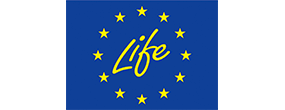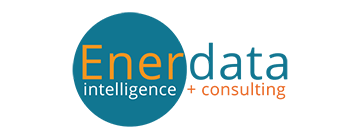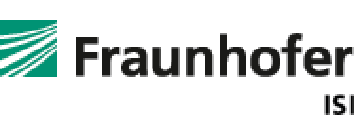Overview
In 2022 final energy consumption (FEC) in Latvia was 3.8 Mtoe, which represents an increase of 16% compared to 2000. In 2022, the largest consuming sector is residential, 29% of total FEC. Unlike other sectors, residential energy consumption decreased by 19% over this period, and its share has decreased by 12.6 percentage points. The share of transport has significantly increased from 22% to 27% in 2022, while industry increased its share from 17.5% to 23.9%.. Due to change in the geopolitical situation in 2022 and the associated rapid increase in energy prices, significant decline in energy consumption was observed in several sectors and in total in 2022 (- 3.4% compared to 2021).
Figure 1: Final energy consumption by sector (with climatic corrections)
Source: ODYSSEEEnergy efficiency for final consumers, as measured by ODEX, improved by 31%, or 1.7% per year from 2000 to 2022.The rate of improvement slightly decreased (1.3% per year since 2010, compared to 2.1% per year over 2000–2010). In industry, despite the economic recession (2008-2011), there has been steady progress and larger gains than in the other sectors, 45% (2.7%/year). Financial support programmes and legislation targeted at reducing heat losses from buildings had contributed to energy efficiency improvement in residential sector by about 36% (average 2.0%/year). For transport and service sectors, gains are lower (respectively 1.3% and 0.5% per year since 2000).
Figure 2: Technical Energy Efficiency Index
Source: ODYSSEEEstimated total energy savings from 2000 to 2022 are around 1.4 Mtoe. Household sector played major role, contributing nearly half (44%) of them. The second largest contribution is provided by industry (31%), followed by transport sector (20%). If in households and industry these savings had been generated due to implemented energy efficiency support programmes and market-based technology development trends, the savings in transport sector had mainly been generated by technological development and, to a lesser extent, by support programmes. Rapid increase in energy prices in 2022 significantly affected consumer behaviour. Energy savings in household and services in 2022 increased by respectively 10.3% and 16.7% compared to 2021.
Figure 3: Energy savings by sector
Source: OdysseeBetween 2000 and 2022 primary energy consumption of Latvia increased by 0.4 Mtoe (almost 10%), from 3.84 to 4.23 Mtoe). The increase in final demand (0.59 Mtoe) was partly offset by a lower consumption in the power sector (mainly due to introduction of the efficient CHP technologies and lesser extent switching to renewable energy sources), which accounted for a decrease of 0.15 Mtoe. Compared to these effects, the contributions from energy use in other transformational changes and non-energy use were relatively small.
Figure 4: Main drivers of the total energy supply variation
Source: OdysseeDuring the period 2000-2022, total final energy consumption in Latvia increased by almost 0.6 Mtoe (from 3.23 to 3.83 Mtoe). The economic activity and structural changes, as well as the weather fluctuations contributed to a total increase of final energy consumption by around 2.24 Mtoe, with the activity effect being the main driver with a share of 82% (+1.83 Mtoe). These were, however, compensated by the energy savings achieved through a considerable improvement in energy efficiency (1.39 Mtoe) as measured by the ODEX and, to a lesser extent, other effects mostly behaviours) that also caused decreasing energy consumption over the period 2000-2022.
Figure 5: Main drivers of the final energy consumption variation
Source: OdysseeEnergy efficiency improvement is one of the top priorities of national energy sector development which allows for the cost-effective reduction of risks associated with security of energy supply, provides sustainability, competitiveness and growth of national economy, in line with GHG emissions mitigation. Mix of instruments are used for energy efficiency policy implementation. The co-financing of energy efficiency investments (see sectorial Tables) and obligation to implement energy management systems (EMS) should be particularly underlined. Table below presents EMS implementation by large enterprises and large electricity consumers, for EMS in public bodies see the Buildings section. Latvia’s Updated NECP2030 put special importance to imposement of obligation on public bodies to monitor and reduce energy consumption and to ensure their exemplary role. In line with Article 5 of the new EED 2023/1791/EU, the mandatory target will be set for public sector (including state and municipal capital companies) - 1.9% energy consumption reduction annually. Latvia's cumulative energy saving target in 2030, according to Article 8 of EED, is 29.5 TWh (2.5 Mtoe). To meet the cumulative energy saving target for 2020, both Energy Efficiency Obligation Scheme (included electricity retail sellers) and alternative measures were implemented. For 2021+ period the EEOS is not continued.
Table 1: Sample of cross-cutting measures
| Measures | NECP measures | Description | Expected savings, impact evaluation | More information available |
|---|---|---|---|---|
| Implemented voluntarily by electricity retail sellers energy efficiency measures | No | For 2021-2030 period the Energy Efficiency Obligation Scheme is not continued. At the same time several electricity retail sellers voluntarily reported on implemented by them energy efficiency promoting measures. Almost all (~97%) savings have been provided by the information and awareness measures focused to particular target groups. The expected savings in 2030 is average savings in 2021 and 2022 due to these voluntarily measures, applying 1-year lifetime. | 1.4 PJ | Link |
| Energy Audits/Energy Management Systems and Energy Efficiency Improvement in Large Enterprises | Yes | The large enterprise shall implement energy audit or EMS or supplemented EnvMS and provide annual report on implemented energy efficiency measures and reached savings. At least three energy efficiency measures (or all if one or two stated) stated by the energy audit or EMS which have the highest energy savings or highest economical return shall be implemented by large enterprise. The expected cumulative annual savings in 2030 (2021-2030 period) is the extrapolation of average 2021 and 2022 savings up to 2030. | 1.6 PJ | Link |
| EMS//Energy Audits in Entities - Large Electricity Consumers | Yes | Legal entity is considered as Large Electricity Consumer (LEC) if its own annual electricity consumption is above 500 MWh in two subsequent years. LEC shall implement EMS or supplemented EnvMS or energy audit and shall provide annual report on implemented energy efficiency measures and reached savings. At least three energy efficiency measures stated by the energy audit or EMS which have the highest energy savings or highest economical return shall be implemented by LEC. The expected cumulative annual savings in 2030 (2021-2030 period) is the extrapolation of average 2021 and 2022 savings up to 2030. | 1.9 PJ | Link |
Buildings
Total energy consumption in buildings in 2022 was 10% lower than in 2000. Consumption in residential buildings had decreased by 19% during this period. In contrast, consumption in service sector buildings had increased by 16%. Rapid increase in energy prices in 2022 affected energy consumption, which decreased by 5.8% in residential buildings and by 4.6% in service sector buildings, compared 2021.
Figure 6: Final energy consumption in buildings (with climatic corrections)
Source: OdysseeIn 2022, space heating accounted for 65% of household consumption, water heating for 19%, cooking for 7% and electrical appliances and lighting for 9%. In 2000-2022, space heating and water heating consumption decreased, respectively by 29% and 13%. Due to buildings energy efficiency improvement space heating consumption decreased fastest, its share decreased by 7.6%. Consumption for appliances and lighting increased by 39% mainly due to increase of large appliances number.
Figure 7: Energy consumption by end-use of households (with climatic corrections)
Source: OdysseeHousehold consumption per m² for space heating decreased by 44% (average 2.6%/year) since 2000, from 21.7 koe/m² to 12.1 koe/m² in 2022, thanks in particular to buildings renovation support programmes. Important, unit consumption average value is influenced by several factors partly compensating each other: fuel substitution, higher energy efficiencies due to thermal regulations, changes in heating system (trend to central heating), changes in the share of single and multi-family dwellings and last but not least behavioural factors (e. g. trend to higher or lower indoor temperature). Behavioural factors played a significant role in energy consumption changes in 2016-2018 and 2021-2022.
Figure 8: Energy consumption of household space heating per m2 (with climatic corrections)
Source: ODYSSEETotal energy consumption per dwelling (excluding space heating) in 2022 was by 7% higher than in 2000. The indicator reached maximum value in 2010 when unit consumption was 28% higher than in 2000. Over time, by 2022, this unit consumption decreased by 16% compared to 2010. Over the entire period consumption for water heating decreased by 8%, in contrast, consumption for electric appliances increased by 48%, mainly due to increase of appliances number. Average value of unit consumption is influenced by several factors partly compensating each other, e.g., dwelling average size, number of people per dwelling, fuel substitution and other.
Figure 9: Energy consumption per dwelling by end-use (except space heating)
Source: ODYSSEETotal electricity consumption per dwelling in 2022 was 47% higher than in 2000. Growth is roughly the same for both end-uses. Consumption, related to electric appliances, increased significantly until 2010 due to rapid growth in their number, after 2010 it decreased due to progressively use of more efficient appliances and wider use of LED bulbs for lighting.
Figure 10: Electricity consumption per dwelling by end-use (with climatic corrections)
Source: OdysseeIn 2022 final energy consumption of households was 0.2 Mtoe lower than in 2000. On the one hand, three main drivers contributed to increase energy consumption – lifestyle/comfort (larger homes by 0.48 Mtoe), more appliances per dwelling (0.26 Mtoe) and climate effects (by 0.06 Mtoe). On the other hand, energy savings (0.61 Mtoe) partly compensated the effect of the above-mentioned energy consumption drivers, while the decline in the number of dwellings had a slight downward impact of 0.08 Mtoe.
Figure 11: Main drivers of the energy consumption variation in households
Source: ODYSSEEOver the period 2000-2022, space hating consumption in the residential sector decreased by around 0.22 Mtoe (from 0.94 to 0.72 Mtoe), mainly due to the energy efficiency improvement (0.54 Mtoe) that exceeded the consumption rise linked to the lifestyle/comfort (larger homes) and penetration of central heating. Climate effects and population change (less dwellings) played less role.
Figure 12: Main drivers of the space heating consumption variation of households
Source: OdysseeIn 2022 final energy consumption of services sector was less by 2% than in 2015. Trend is driven by main branches with the largest share in total consumption in 2022: private offices (36%), public offices (16%), wholesale (15%). All branches perceived consumption decrease, ranging 2-18%, except wholesale. Thanks to support programmes for state and municipal buildings renovation, the consumption of public offices decreased by 18%.
Figure 13: Final energy consumption of services by branch
Source: OdysseeEnergy consumption per employee increased by 8% between 2000 and 2022, mainly due to electricity consumption per employee sharp increase by 61%. Though electrical appliances become ever more efficient, rapid increase in their number and ICT diffusion in offices contributed to this growth. Digital solutions introduction to replace employees in certain segments of service sector also affects this indicator.
Figure 14: Energy and electricity consumption per employee in services (with climatic corrections)
Source: ODYSSEEBuildings is one of the top priorities of national energy efficiency policy, particularly emphasized by Updated NECP2030. Mix of investment support, regulation, information and demonstration measures are used. Significant energy saving impact is provided by the obligation to implement energy management systems (EMS) in public sector. Thermal engineering of new apartment building envelopes since 1980 is characterized by continuous stringent regulations, resulting in decrease of specific normative energy consumption for heating: 150-200 (1980), 100-130 (1992), 70-90 (2003), 60-85 (2015), 40-60 (2021) kWh/m2/year. However more than 90% of total floor area of multi-apartment buildings were built before 2003, thus having low energy efficiency. Energy certification of buildings has been introduced in 2013. The recasted Cabinet of Ministers Regulation on Energy Certification of Buildings (2021) states both energy consumption for heating and non-renewable primary energy consumption for particular energy performance classes, also voluntary A+ class is introduced. The new Construction Standard (in force 2020) incorporates directly the energy performance requirements (in kWh per m2 annually). From 01.01.2021 (public buildings from 01.01.2019) all construction intentions are nearly zero energy buildings, if economically viable. In December 2020 the Cabinet of Ministers Regulation on minimal energy efficiency requirements of existing buildings has been adopted.
Table 2: Sample of policies and measures implemented in the building sector
| Measures | NECP measures | Description | Expected savings, impact evaluation | More information available |
|---|---|---|---|---|
| Energy Efficiency Improvement and RES technologies in Multi-Apartment Residential Buildings | Yes | Over 2009-2023 period the energy efficiency improvement of multi-apartment buildings had been co-financed by the ERDF, in total around 1.4 thousand buildings had been renovated. The completed in 2021-2023 projects provide in 2023 0.3 PJ cumulative annual savings (see completed HOU-LV0791). In 2023-2029 the energy efficient renovation of residential buildings, including the installation of RES utilising microgeneration technologies (both heat and power production) is continued. The investments are co-financed by two funds: Latvia’s Recovery and Resilience Facility Plan (2023-2026) and Cohesion Policy Programme for 2021-2027planning period (2025-2029). In its turn, the information programme “Let’s Live Warmer!” (see HOU-LV0779) promotes the housing associations participation in the programme by providing information on the best practices of the renovation and available financial support, as well as on the good practice of maintaining the apartment buildings after renovation. The expected savings for the projects to be completed in 2024-2029 period is also 0.3 PJ. | 0.6 PJ | Link |
| RES technologies in Residential Buildings to reduce GHG emissions: national EAAI instrument. | No | The investment co-financing by revenues from EU ETS Emissions Allowances Auctioning in 2022-2029 is provided for wide range of residential buildings’ types. Support is provided for purchase of RES heat technology to replace existing fossil fuel one, solar heat technology to produce hot water, RES electricity technology to produce, store and supply renewable electricity to residents. Also connection of buildings to district heating system is supported. Energy saving is accounted arising due to installation of heat pumps and effective wood pellets technologies replacing previous low-efficiency heating systems. | 0.2 PJ | Link |
| Energy Management Systems in Municipalities | Yes | After 2021 administrative territorial reform the EMS implementation is mandatory in all municipalities. Annual report on implemented energy efficiency measures and reached savings has to be submitted. The expected cumulative annual savings in 2030 (2021-2030 period) is the extrapolation of average 2021 and 2022 savings up to 2030. | 0.4 PJ | Link |
| Energy Efficiency Improvement and RES technologies in State Buildings | Yes | The completed in 2021-2024 projects of the previous planning period of 2014-2020 provide in 2024 0.1 PJ cumulative annual savings (see completed SER-LV1706). The measure continues in 2023-2029 the improvement of energy efficiency (both building’s constructions and engineering systems) and providing of smart energy management in buildings of various use: (i) state central administration buildings, (ii) vocational education institutions and colleges (SER-LV4290, (iii) buildings in which the functions related to culture sector is performed (SER-LV1717). The investments are financed by the Latvia’s Cohesion Policy Programme for 2021-2027 planning period as well as by Latvia’s Recovery and Resilience Facility Plan; co-financing by state budget and, in particular buildings, by private financing. The measure includes also installation of RES equipment for heat and power generation, as well as connection to district heating systems. The expected savings for the projects to be completed in 2024-2029 period is 0.1 PJ. | 0.2 PJ | Link |
| Energy Efficiency Improvement and RES technologies in Municipal Buildings | Yes | The completed in 2021-2024 projects of the previous planning period of 2014-2020 provide in 2024 0.07 PJ cumulative annual savings (see completed SER-LV1707). The measure continues in 2023-2029 the improvement of energy efficiency (both building’s constructions and engineering systems) and providing of smart energy management in buildings of municipalities, the measure also includes installation of RES equipment for heat and power generation as well as connection to district heating systems. The investments are financed by two funds: Latvia’s Recovery and Resilience Facility Plan and Cohesion Policy Programme for 2021-2027planning period; co-financing by municipalities budget. The expected savings for the projects to be completed in 2024-2029 period is 0.03 PJ. | 0.1 PJ | Link |
Transport
In 2022 transport sector total consumption was 44% higher than in 2000. Road transport consumption increased by 55% (2%/year), constituting a dominating share of consumption (96.7% in 2022). In 2022 cars constituted 50.5% of total sector’s consumption, road freight transport 41.8%. Over the period, the railway share decreased from 9.7% to 2.8%.
Figure 15: Transport energy consumption by mode
Source: ODYSSEEPassenger traffic grew by slightly since 2000 (~0.1%/year). Traffic by cars increased (0.5%/year) and represented 84% of passenger traffic in 2022. Public transportation decreased by 1.3%/year (buses) and by 1.9%/year (rail). Significantly impacted by COVID-19, public transport recovered in 2022, increasing in passenger-kilometres by 27% (bus) and 50% (rail), compared to 2021.
Figure 16: Modal split of inland passenger traffic
Source: ODYSSEERoad represented 46% of total freight traffic in 2022, 32% points more than in 2000. The share of rail decreased strongly. Due to sharp decline in rail freight (2.6%/year), mainly due to a rapid decline since 2020 in transit freight volume, total freight (in tonne-kilometre) showed decrease by 0.6%/year. In 2022, rail freight decreased by 50% compared to 2019.
Figure 17: Modal split of inland freight traffic
Source: ODYSSEEOver 2000-2022 period, energy consumption of cars per passenger km had increased by about 1.7% per year. Several factors influenced this negative trend. Average fuel consumption per vehicle (in litres/100 km), both petrol- and diesel-fuelled cars, had slightly dropped over time. However, this decline was slow, due to the share of large cars (> 2 litres) in the total number of cars by 2022 had increased by 15 percentage points compared to 2000. At the same time, the share of small cars (<1.4 litres) had decreased by 5 percentage points. In addition, the average number of occupants per trip for all household vehicles had decreased over time. In 2022 average number of occupants per trip had decreased by approximately 14% compared to 2017.
Figure 18: Energy consumption of cars per passenger-km
Source: ODYSSEEOver the period, energy consumption in the transport sector has increased by 0.3 Mtoe (1.7%/year), from 0.73 Mtoe to 1.03 Mtoe. The main drivers for the increase are modal shift to road transport for passenger and goods traffic (+0.34 Mtoe) and decrease in load factors (“other effects”, +0.15 Mtoe) . This trend was partly counterbalanced by energy savings (0.28 Mtoe). The growth in passenger and freight traffic was marginal (+0.1 Mtoe).
Figure 19: Main drivers of the energy consumption variation in transport
Source: ODYSSEENECP 2030 policies promote zero-emission vehicles, both public, commercial and private road transport as well as EMU trains, multi-modality and environmentally friendly public transport infrastructure with railway as central element. Sectorial planning done by the “Transport Sector Development Strategy 2021-2027”. Mix of measures is applied: infrastructure investment, electric vehicles (EV) purchase co-financing, regulations (standards, labelling, public procurement), fiscal, information/education measures. Cars’ and light duty vehicles' annual operational tax based on specific CO2 emission is introduced. EURO class-based taxation is introduced for buses and duty vehicles having gross weight above 3500 kg. There is on-going development of EV charging infrastructure in public areas, in addition to the country-wide EV fast charging network established in 2021. EV-charging infrastructure on TEN-T roads envisaged.
Table 3: Sample of policies and measures implemented in the transport sector
| Measures | NECP measures | Description | Expected savings, impact evaluation | More information available |
|---|---|---|---|---|
| Development of electric vehicles (EV) charging infrastructure in public area | Yes | Updated NECP2030 plans to significantly increase the electric vehicles charging infrastructure. Recovery and Resilience Facility Plan supports the establishment of charging points in public areas, in cooperation between power distribution system operator SJSC “Sadales tīkls” and public and private actors, such as state and municipal institutions, other derived public persons, public and public-private capital companies, registered EV charging point operator. Expected in 2030 saving relates to replacement of 2% of 2023 road transport’s fossil fuel consumption by electric vehicles. | 0.6 PJ | Link |
| Promotion of clean and energy efficient road transport by green public procurement | Yes | The minimum procurement targets for clean vehicles (Annex of the Directive 2019/1161/EU) have been transposed in national legislation in September 2021. Cabinet of Ministers regulation on green public procurement includes, from August 2023, the cars and light duty vehicles in the group, for which application of green public procurement criteria is mandatory. For financial support measures to increase the number of zero emission vehicles in public transport, municipal transport and state direct administration institutions – see the measure TRA-LV3890. | included in the measure above | Link |
| Electric vehicles purchase subsidies for physical persons | Yes | Support in 2022-2025 is provided by the national green investment scheme (EU ETS Emissions Allowances Auctioning Instrument) for both new and exploited battery-EV and new plug-in-EV of M1 and N1 category. The general grant is differentiated depending on whether EV is new or exploited one, and increased grant applies for large families and persons who care child or up to 24 age adult with disability. | 0.07 PJ | Link |
| Electric vehicles purchase subsidies for businesses sectors | Yes | Support in 2025-2027 is provided by Latvia’s Modernization Fund for new M1, M2, N1 and N2 category battery-EV purchase, including also EV charging equipment and equipment to produce and store for charging solar or wind electricity. In its turn, Latvia’s Recovery and Resilience Plan provides, up to 31.12.2025, the support for only purchase of M1 and N1 category battery-EV. | 0.03 PJ | Link |
| Development of environmentally friendly multi-modal public transport infrastructure | Yes | Establishment of multi-modal public transport system having rail transport as the central element. Convenient interconnections between railway and road public transport modes, including private electric mobility and micromobility, will be insured in Latvia as a whole (funding of Latvia’s Cohesion Policy Programme for 2021-2027planning period, at least 25 multi-modal connection points constructed up to 31.12.2029) and in Riga metropolitan area (funding of Latvia’s Recovery and Resilience Facility Plan, 8 multi-modal connection points, constructed up to 31.05.2026) | Link |
Industry
Total consumption of industry sector increased from 0.58 Mtoe in 2000 to 0.91 Mtoe in 2022 (+58%). Consumption increase was mainly brought about by two branches: non-metallic minerals by 4.3%/year and wood products (other branches included) by 9%/year; the later absorbs 61% of the consumption of manufacturing sector.
Figure 20: Final energy consumption of industry by branch
Source: ODYSSEESince 2000 final energy consumption in industry increased by 0.335 Mtoe (2.1%/year). The industrial growth (“activity effect”) and other factors had a large impact on energy consumption (+0.56 Mtoe and 0.24 Mtoe, respectively). Just over half of these effects had been offset by energy savings (0.44 Mtoe) thanks to technical improvements of the machineries and processes. Structural changes towards less energy-intensive branches caused a minor reduction (0.02 Mtoe).
Figure 21: Main drivers of the energy consumption variation in industry
Source: ODYSSEEMix of investment co-financing, regulatory (particularly mandatory implementation of energy audits/energy management systems in large enterprises and large electricity consumers, see the Overview section above), market instruments (particularly EU ETS), information measures are used. Over 2023-2029 period, the energy efficiency investments in the manufacturing industry are co-financed by the Latvia’s Recovery and Resilience Facility Plan and Cohesion Policy Programme for 2021-2027 planning period, including Latvia’s Territorial Just Transition Plan. In turn, state-owned JSC Development Finance Institution ALTUM provides complementary measures.
Table 4: Sample of policies and measures implemented in the industry sector
| Measures | NECP measures | Description | Expected savings, impact evaluation | More information available |
|---|---|---|---|---|
| Improving energy efficiency and promoting the use of RES technologies in industry | Yes | The completed in 2021-2023 projects of the previous planning period of 2014-2020 provide in 2023 0.25 PJ cumulative annual savings (see completed IND-LV1223). The measure continues in 2022-2029 the support for manufacturing industry and in this period widen support also to commercial services sector. The investments are co-financed by two funds: Latvia’s Recovery and Resilience Facility Plan and Cohesion Policy Programme for 2021-2027 planning period. Wide range of energy efficiency improvement measures are supported, both in buildings and related engineering systems and in production processes (implementation of new energy efficient production processes’ equipment, recovery of secondary energy from production process, etc.). The RES-technologies for both fuel, heat and electricity production and storage for own consumption are also supported. The expected savings for the projects to be completed in 2023-2029 period is 0.15 PJ. | 0.4 PJ | Link |
| Investments to improve energy efficiency in food processing enterprises | Yes | In 2025 it ends the 2016-2025 investment support programme provided within the framework of the national Rural Development Programme of 2014-2022 programming period (see IND-LV1226). The investment support programme will be continued in the 2025-2029 period within the frame of the Latvia’s Common Agriculture Policy Strategic Plan for 2023-2027 programming period. The investments are co-financed by the EAFRD. To evaluate ex-ante energy savings in 2029 due to the projects completed over 2021-2029 period it is applied the same specific costs of energy saving as for the measure presented above. | 0.4 PJ | Link |
| Grants for Energy Audits and Technical documentation: ELENA (European Local ENergy Assistance) programme | No | In Q3 2022 - Q2 2025, the ALTUM offers the grants for energy audit and technical documentation elaboration (up to 85% of the total costs) for energy efficiency improvements and RES technologies installation based on agreement with ELENA programme. Beneficiary should provide the energy efficiency investments of at least 20-fold of the granted amount. These future investments can be financed also by the ALTUM provided loan for energy efficiency. | 0.1 PJ | Link |





